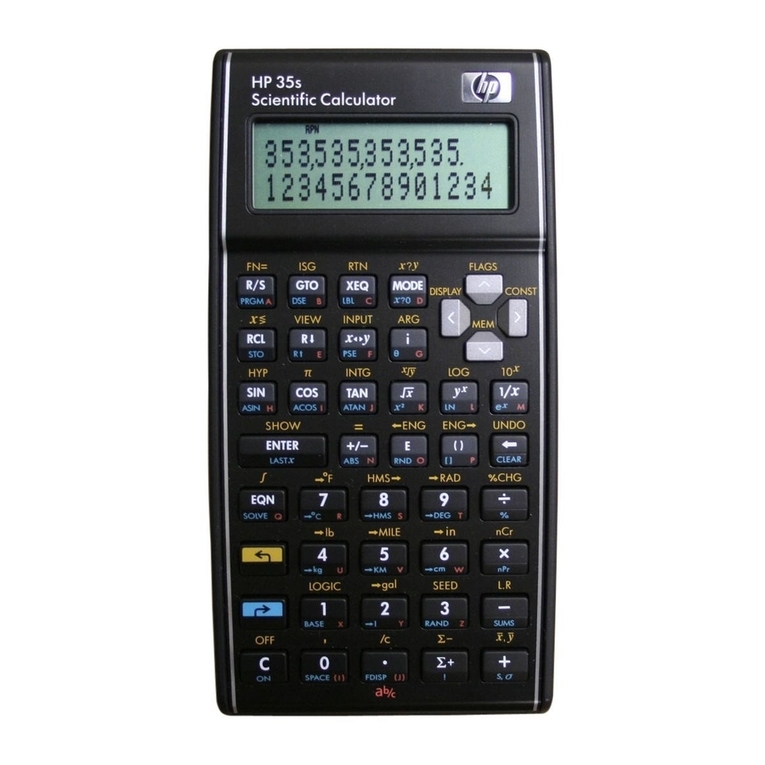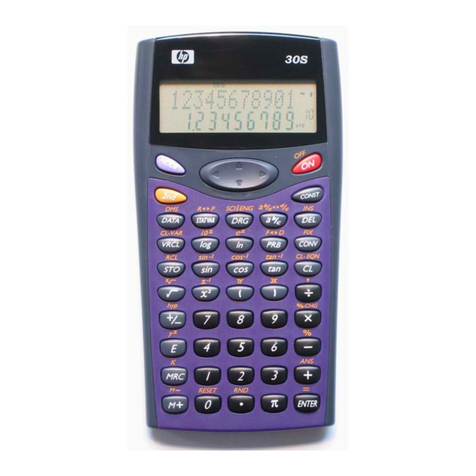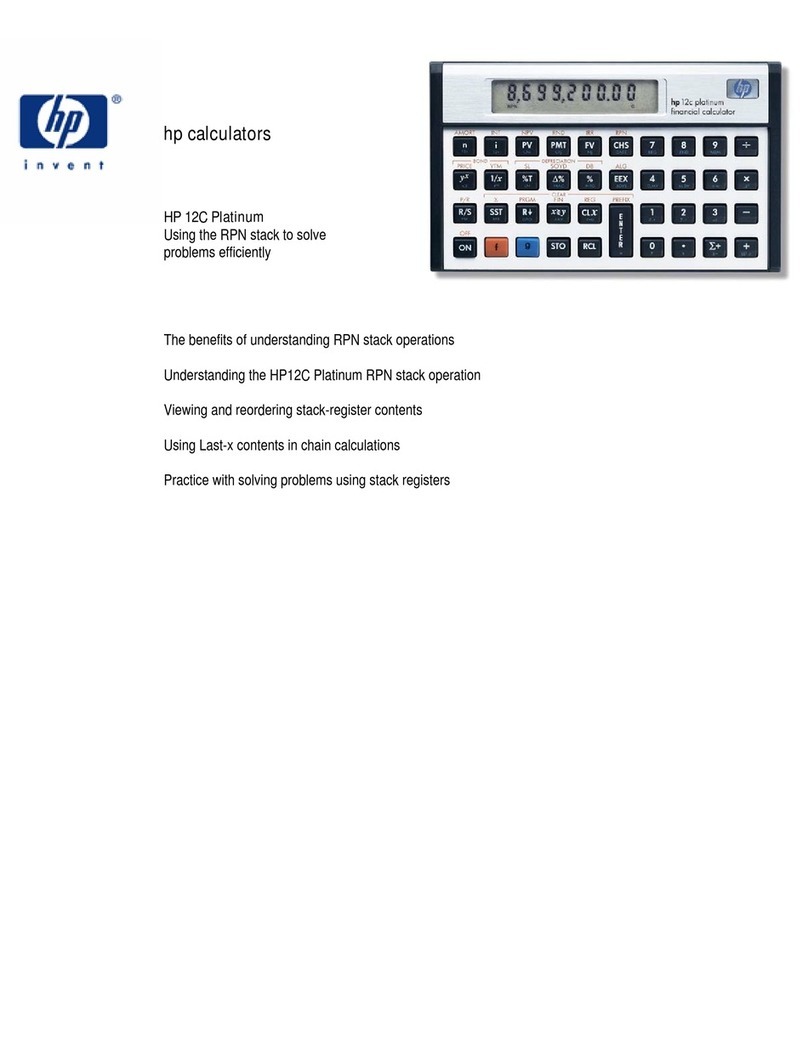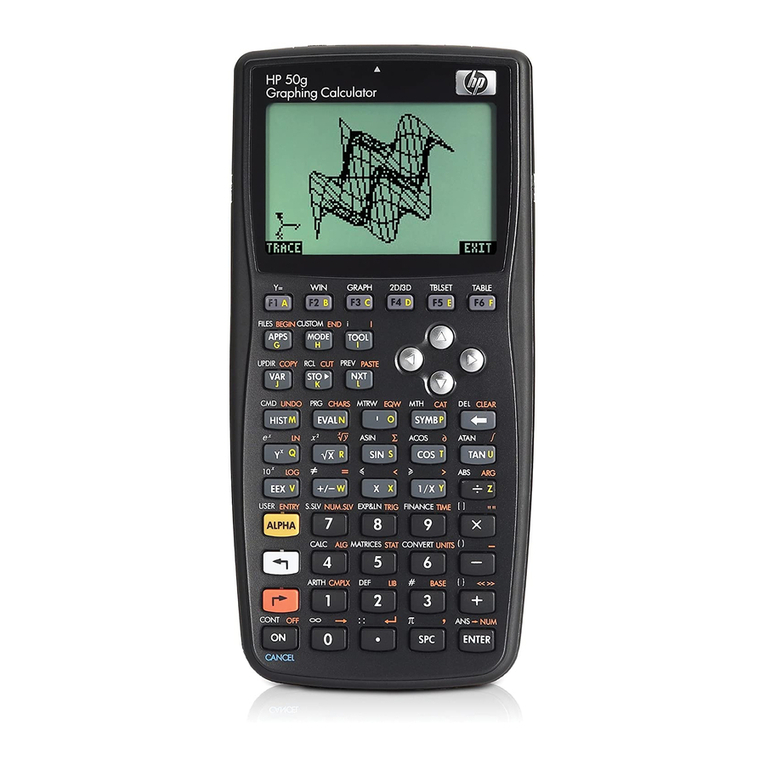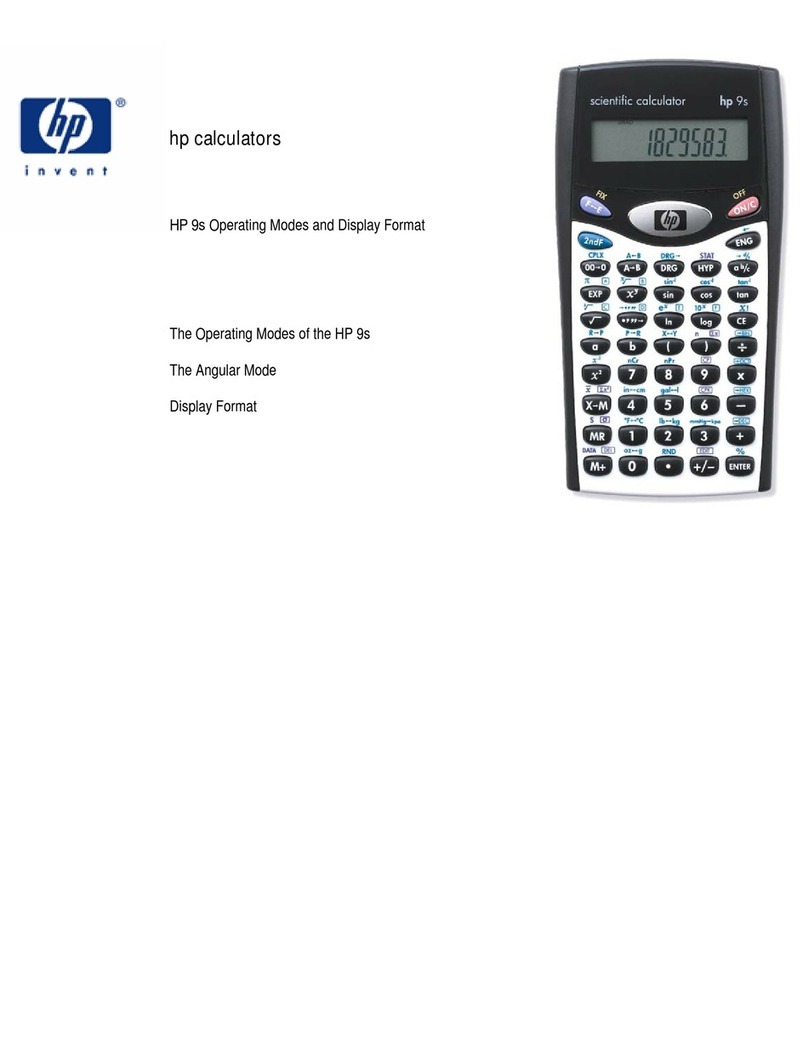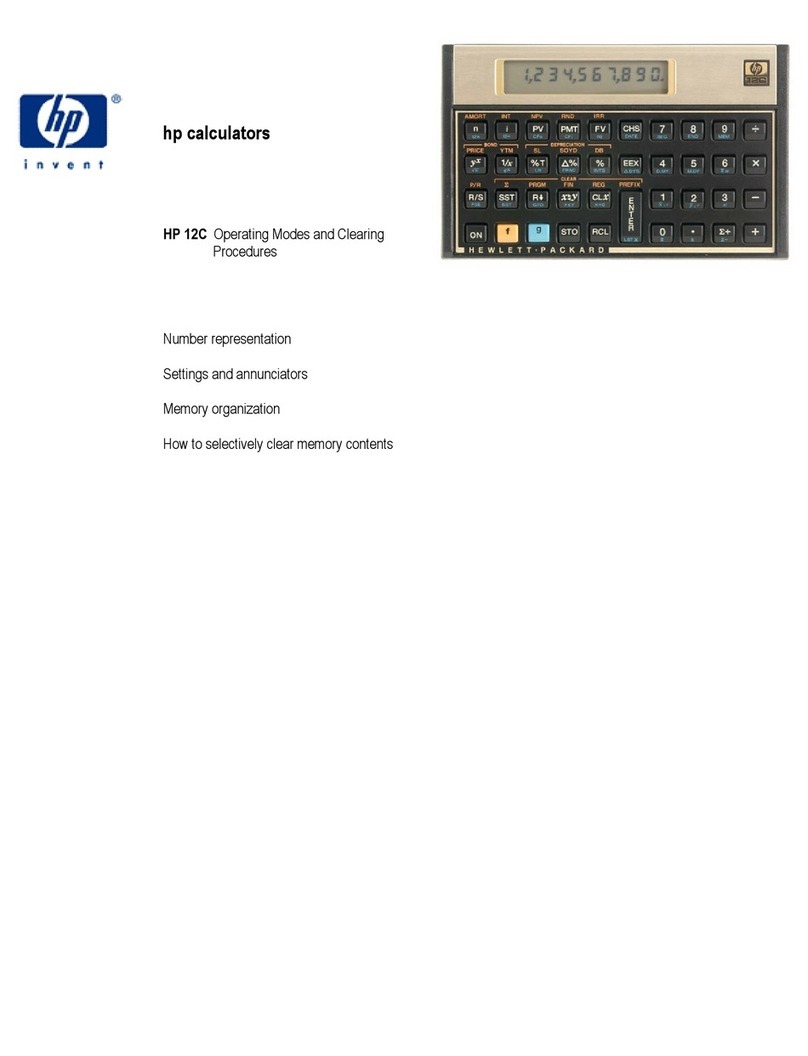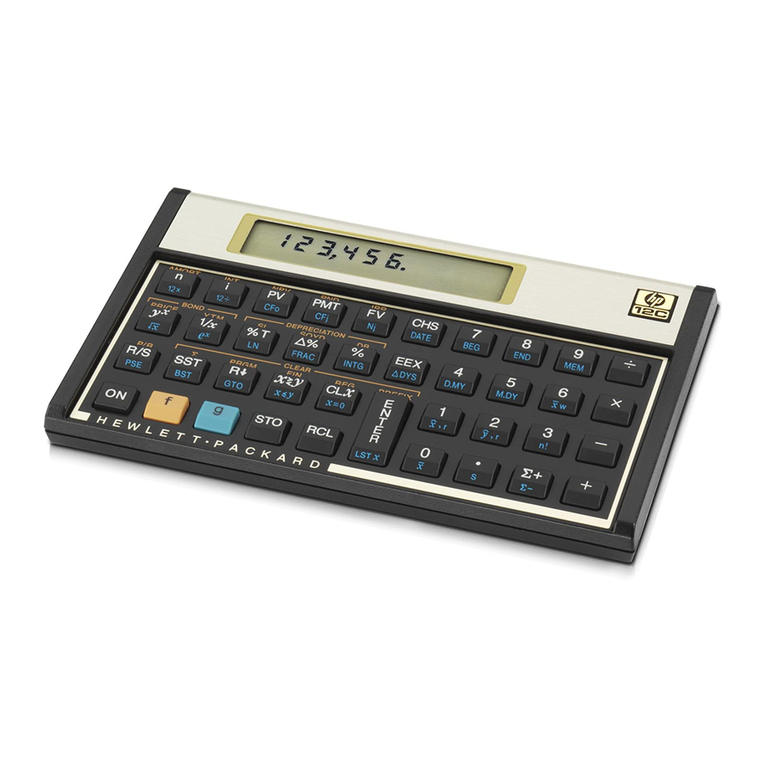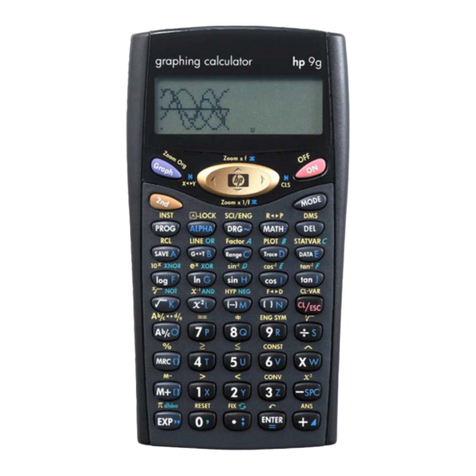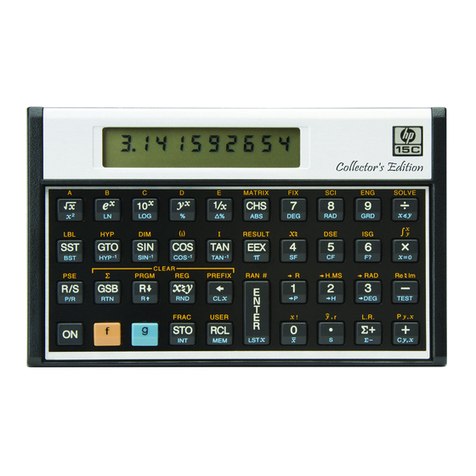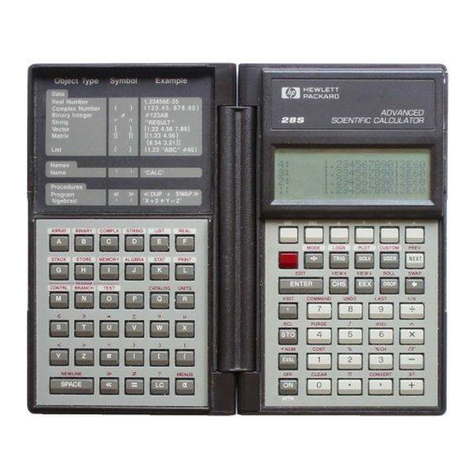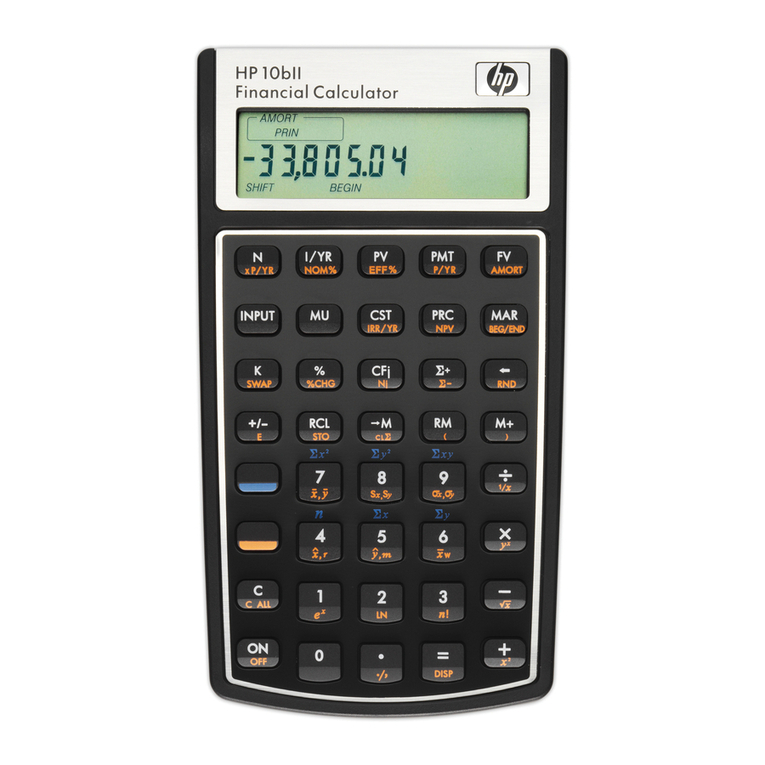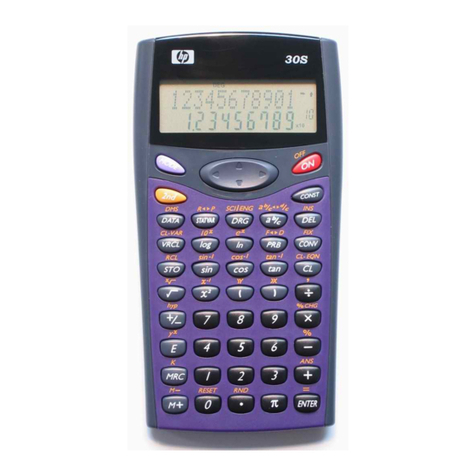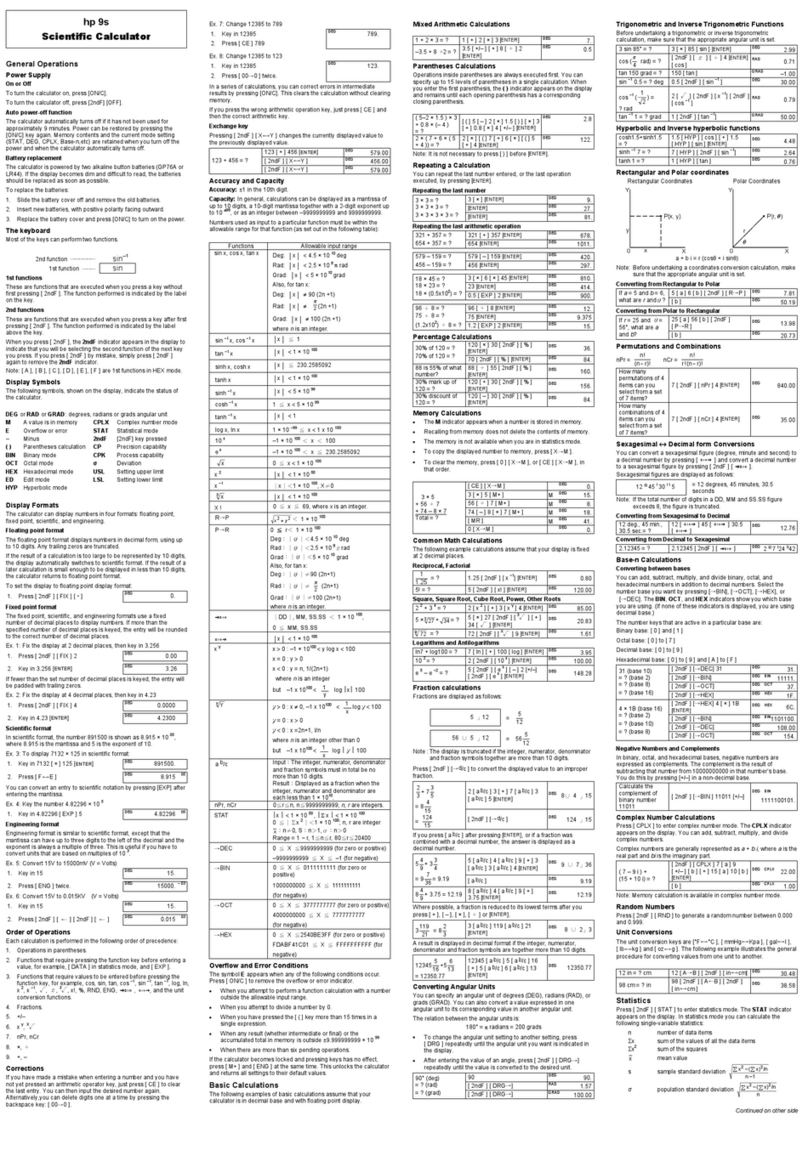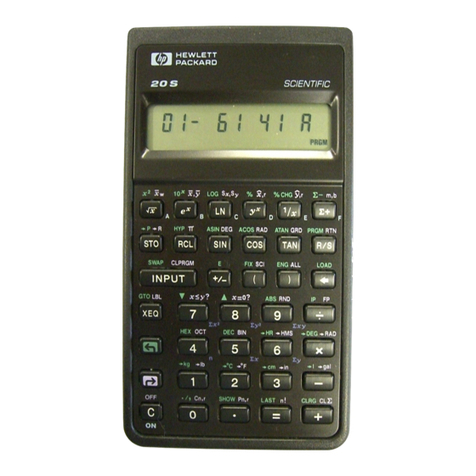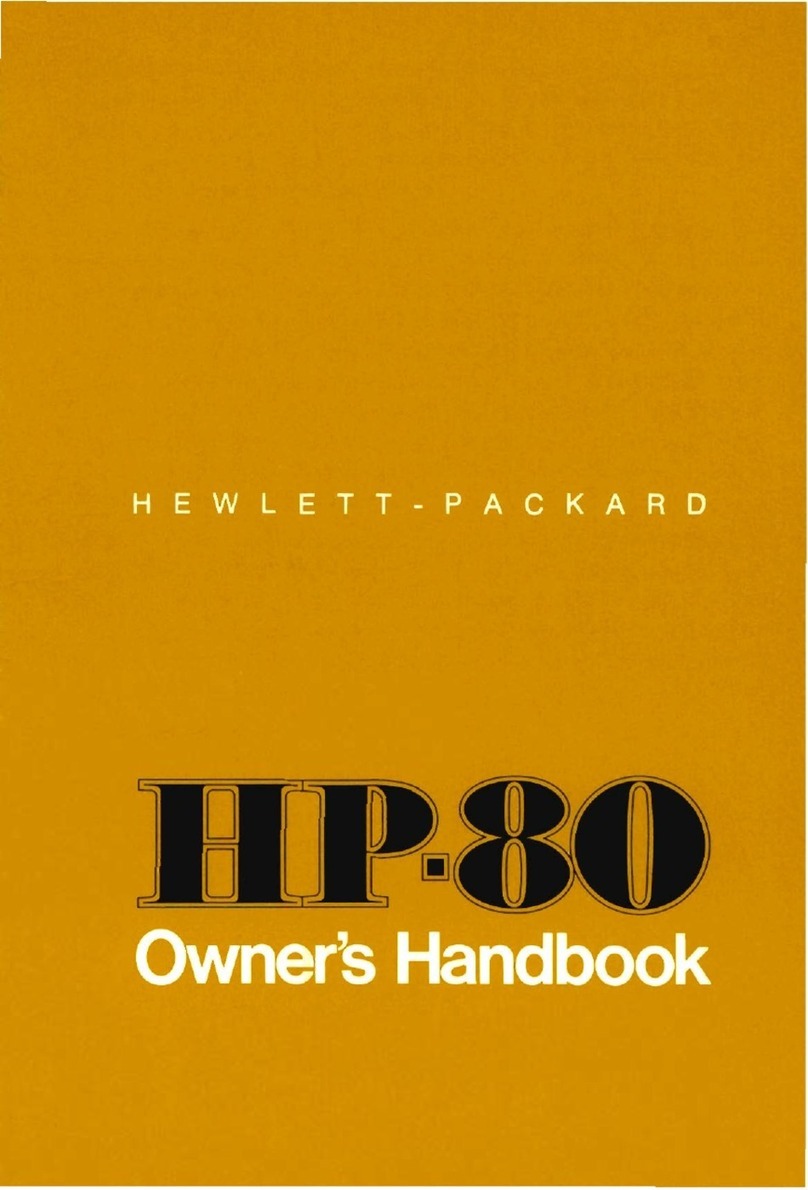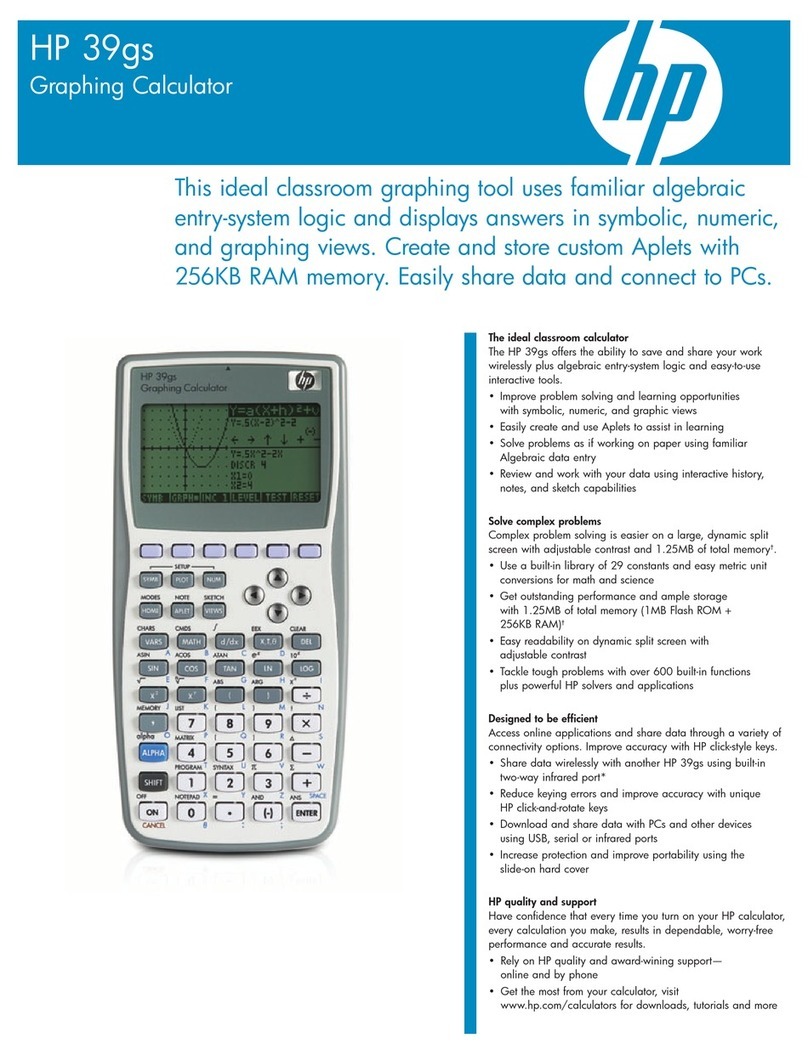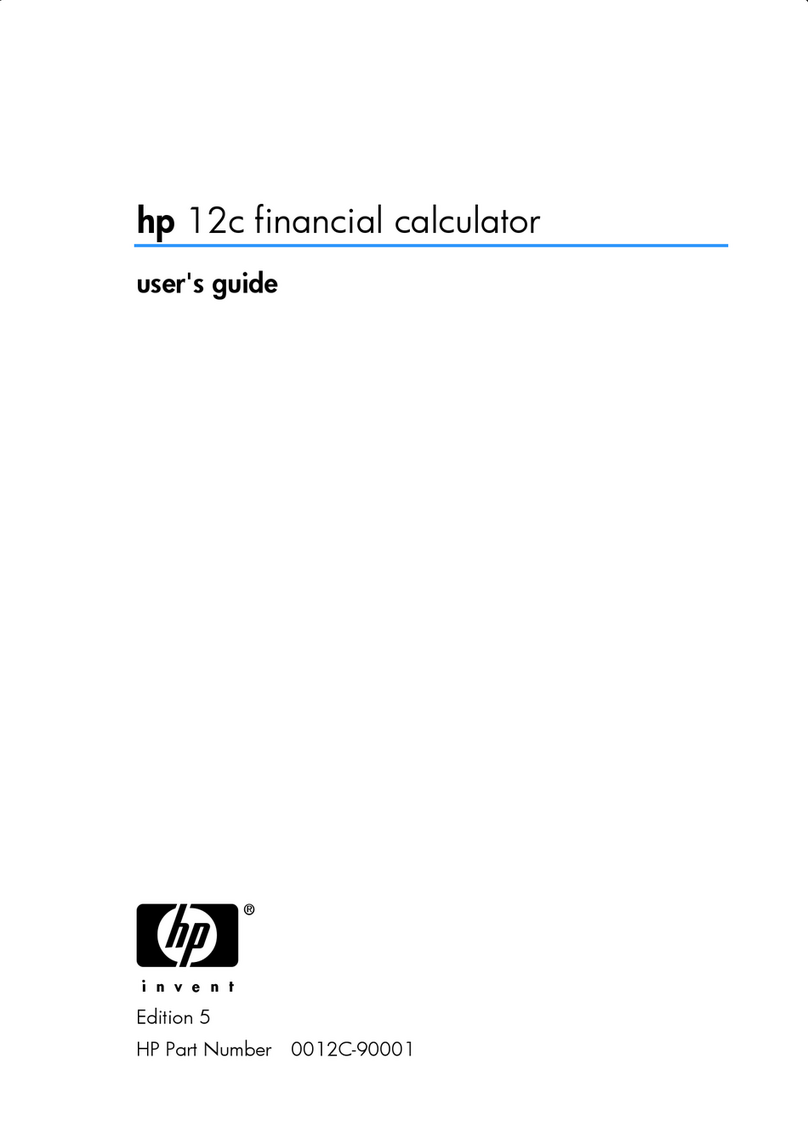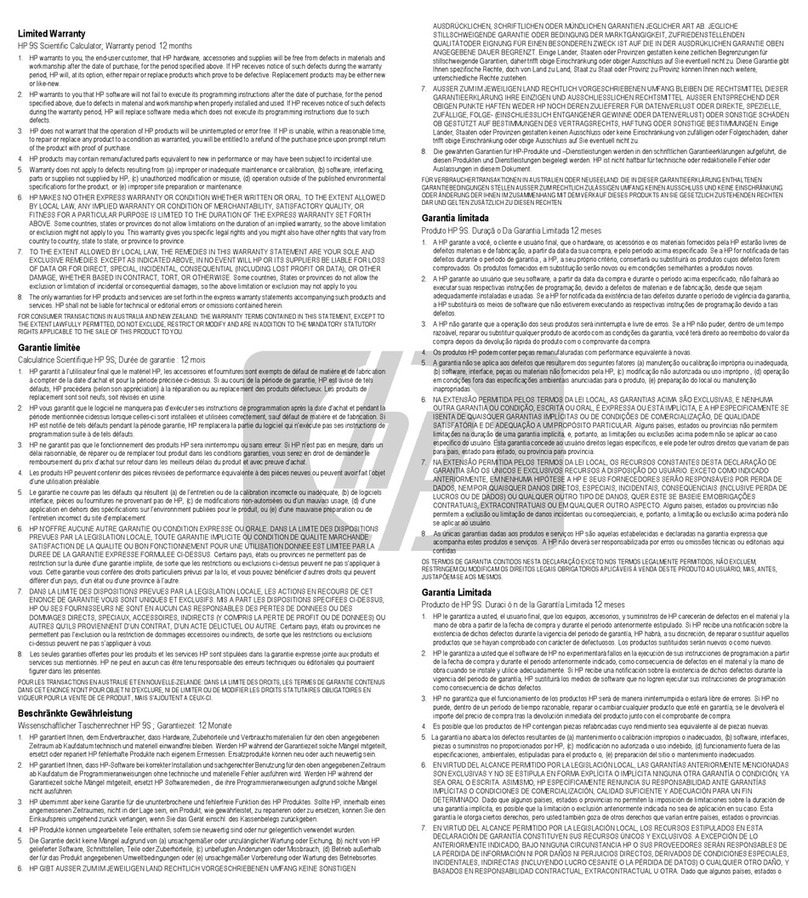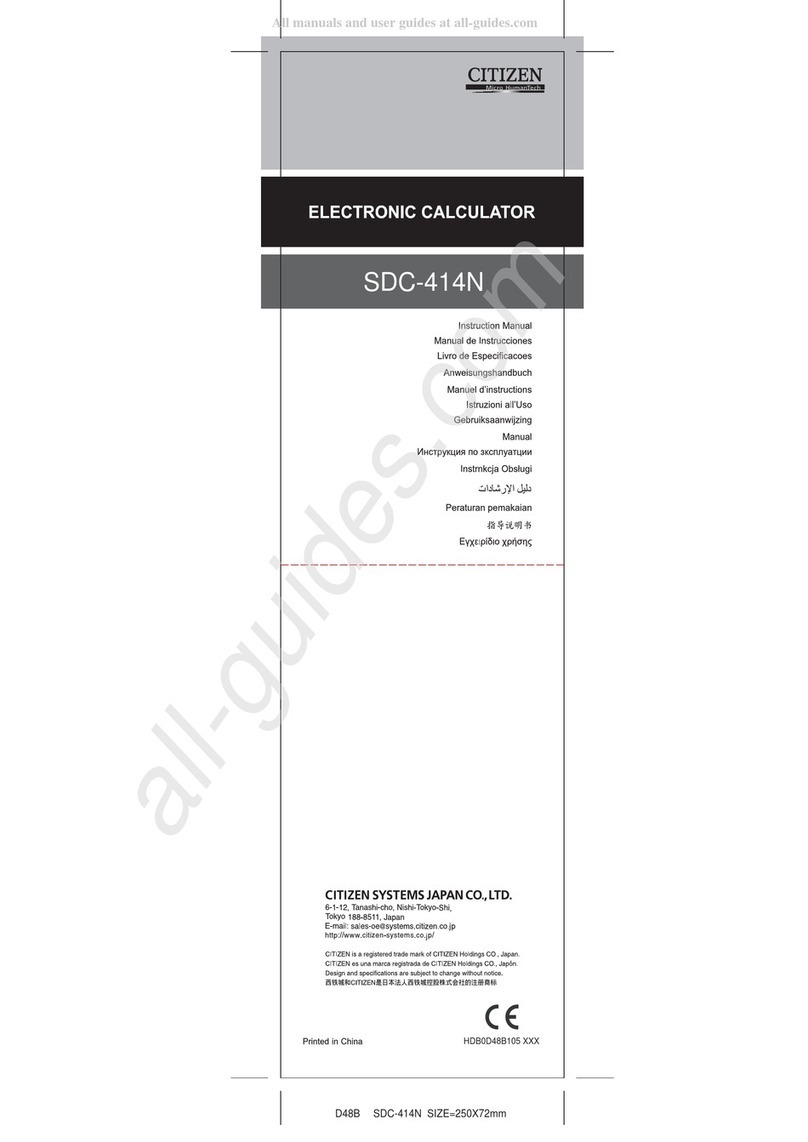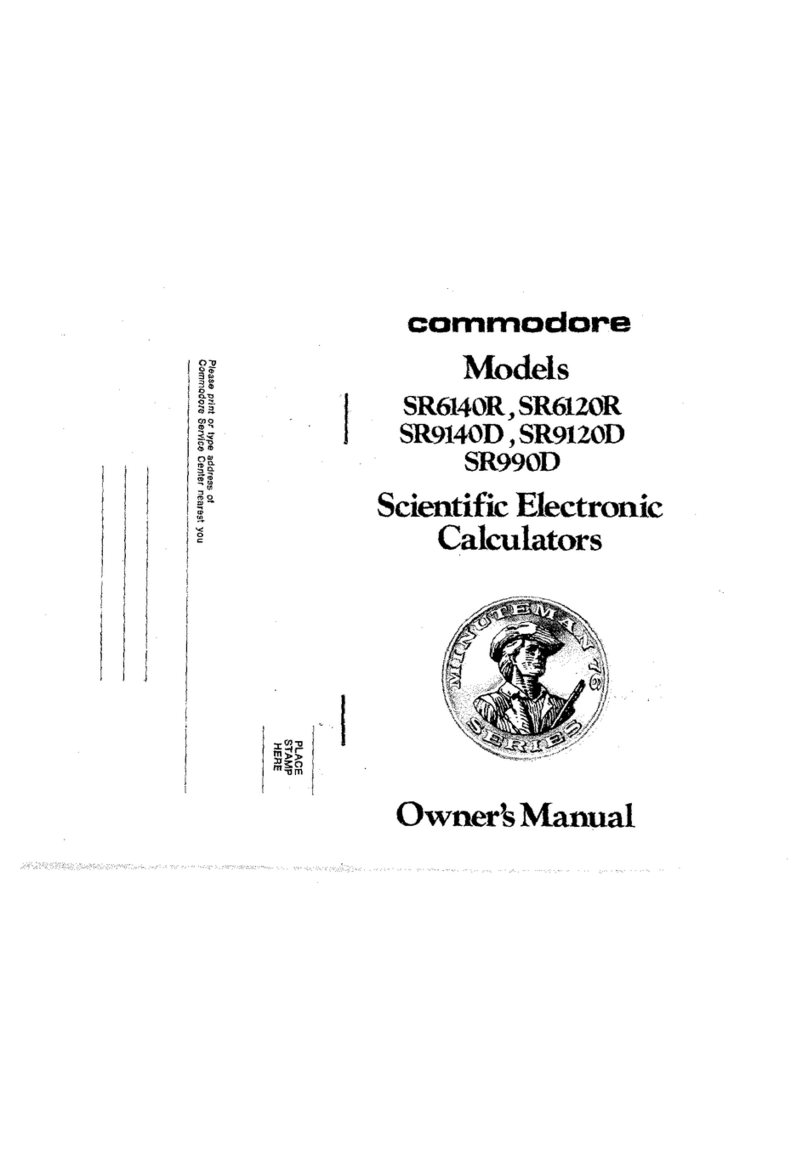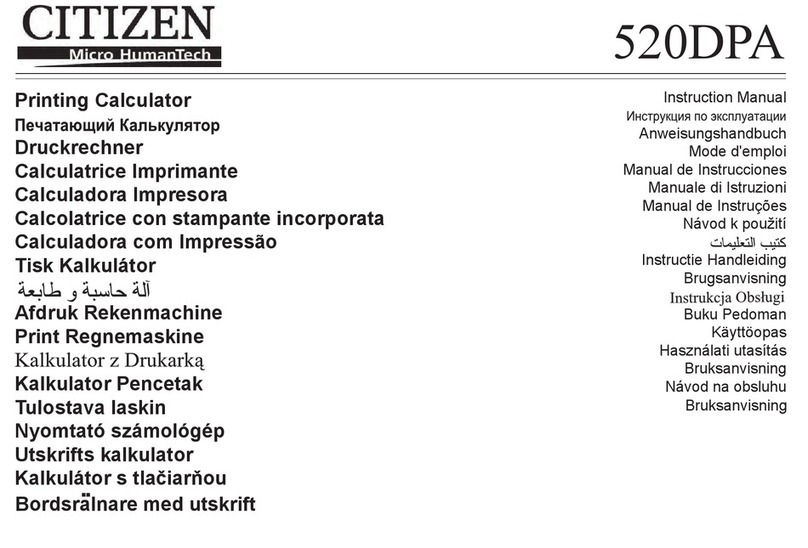
hp calculators
HP 20b Statistics – Rearranging Items
hp calculators - 2 - HP 20b Statistics – Rearranging Items - Version 1.0
Statistics on the HP 20b
The HP 20b has many built-in statistics functions that apply to finding averages and standard deviations aswell as linear
regression, correlation and rearranging items.
Rearranging items
There are a great number of applications that involve determining the number of ways a group of items can be
rearranged. The factorial function, accessed by pressing :g on the HP 20b, will determine the number of ways you
can rearrange the total number of items in a group if given an integer for its argument. If given a real number for its
argument, the HP 20b returns the gamma function.
To determine the number of ways you can select a subgroup of a specified number of items from a larger group, where
the order of each of the items in the subgroup is important, the permutation formula is used, as shown in figure 1 below.
To find the permutation of n items taken r at a time, in algebraic or chain mode press n :b r =. In RPN mode,
press n Ir :b. The formula indicates the permutations of n items taken r at a time.
)!( !rn n
nPermutatio −
=Figure 1
To determine the number of ways you can select a subgroup of a specified number of items from a larger group, where
the order of each of the items in the subgroup is not important, the combination formula is used, as shown in figure 2
below. To find the combination of n items taken r at a time, in algebraic or chain mode press n :c r =. In RPN
mode, press n Ir :c. The formula indicates the combinations of n items taken r at a time.
)!(! !rnr n
nCombinatio −
=Figure 2
To see the difference between permutations and combinations, consider the set of three items A, B, and C. If we select a
subgroup of 2 items, we could select AC and CA as two possible subgroups. These would be counted as different
subgroups if computing the number of permutations, but only as one subgroup if computing the number of combinations.
Factorials show up throughout mathematics and statistics. Permutations and combinations show up in many discrete
probability distribution calculations, such as the binomial and hypergeometric distributions.
Practice solving problems involving rearranging items
Example 1: In how many different ways could 4 people be seated in a row of 4 chairs?
Solution: 4:g
Answer: 24.
Example 2: How many different hands of 5 cards could be dealt from a standard deck of 52 cards? Assume the order
of the cards in the hand does not matter.
Solution: Since the order of the cards in the hand does not matter, the problem is solved as a combination.
In algebraic or chain mode, press: 52:c5=






